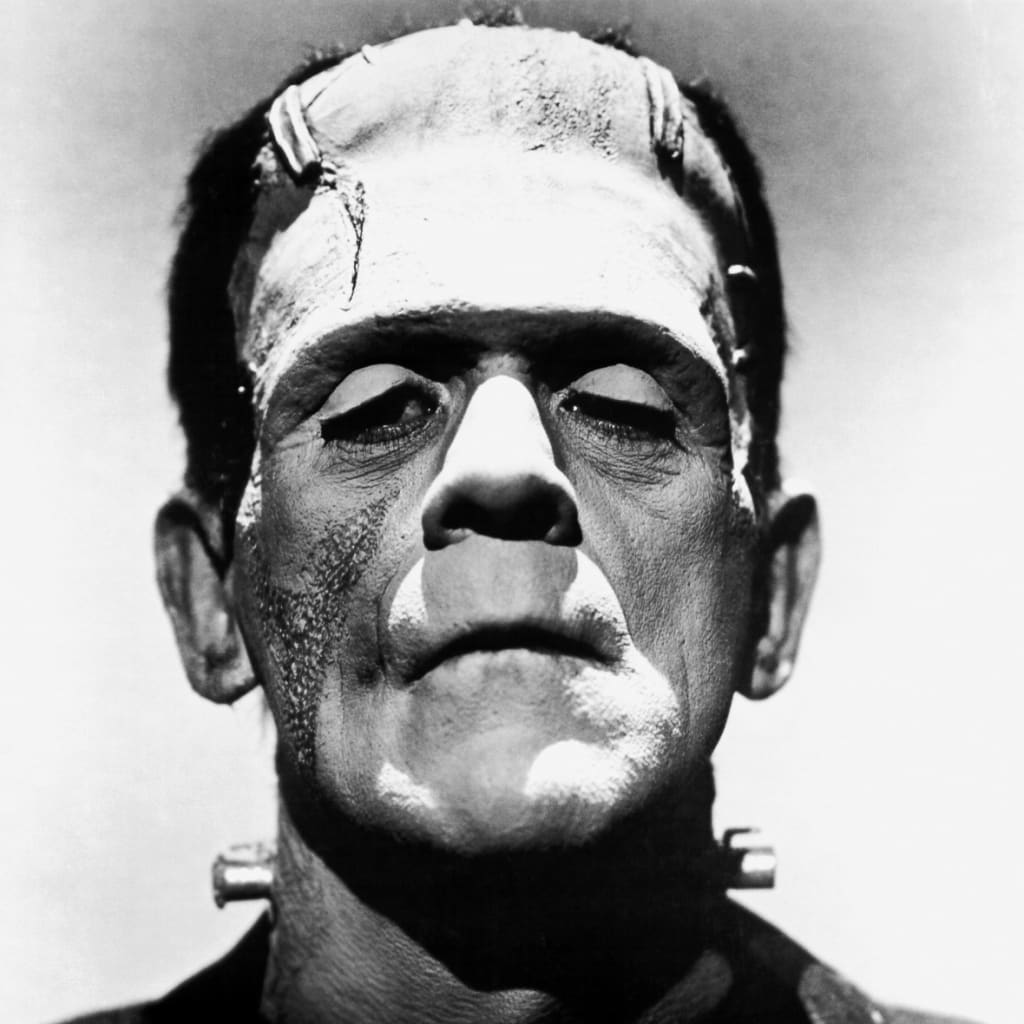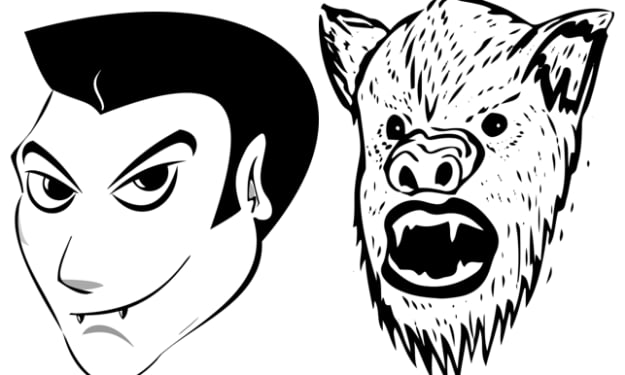Monster or Misconstrued Mate
Mary Shelley's Frankenstein

In Milhauser’s criticism of Mary Shelley’s Frankenstein, he provides evidence of the literary description of the noble savage. Milhauser believed that a reader's first thoughts about the book would be that it was a supernatural horror story, filled with Shelley’s “macabre and pseudo-scientific sensationalism.” Once the audience took more time to consider the actions and plotlines, they would see how deep each character really is and what he or she represents.
Milhauser recognizes that the popularity of the book came from it being a scary story of bringing life to a creature formed by spare body parts. He notes that in order to understand the full meaning of the story one had to realize the underlying themes written by the author, such as how very human the monster was. Milhauser said, "...secondary aspects of the work... must, therefore, be taken into consideration before either the book or the young mind that composed it has been properly assayed." That understanding allowed the audience to relate to the feelings of the characters and deeply ponder life's mysteries, with "...a thin vein of social speculation," like a philosopher might. (Milhauser) There is much more depth behind the creature than one first sees and the reader must understand all characteristics of him to fully grasp what is being conveyed by the author. That Shelley added this extra layer to the character is another mystery, as it has no congruence with a horror story.
The critic is not impressed by the author waiting so long to introduce the "softer side" of what might have been a horrible creature, and he does not believe it fit well into the plot at all. It throws off any preconceptions the reader would have had about the monster, all the while revealing more about his humanity. It "...confuses as much as it promotes the development of the character..." (Milhauser) It is quite a plot twist when suddenly the terrifying creature is intelligent and benevolent, and then the story is not over. The notion of the noble savage seems oddly out of place in this horror story and it diminishes the suspense. Victor describes the creature as “...the demoniacal corpse to which I had so miserably given life.” (Shelly, 38) The creature is a nightmare come to life. In his story, he speaks of learning and shows compassion for the De Lacey family. These two ideas do not fit together at all.
The monster is painted to be this innocent creature so much that it seems impossible that he would commit needless murders. Milhauser does not believe that it is credible. The creature turns to a “melodramatic vengefulness” after being rejected by the De Lacey family and after being shot after he saved a young girl. (Milhauser) He says, “For the first time the feelings of revenge and hatred filled my bosom... [and] I bent my mind towards injury and death.” (Shelly, 108-09) The story takes a drastic and sudden turn when the monster takes the life of his first victim William. He goes straight from being good to a killer with no pretense leading up to this. Millhauser believes the monster is still somewhat a “child of nature” because “of his strange origin and untutored state.” The being is “an outsider... and responds to [our society] with a mixture of bewilderment and dismay.” (Milhauser) He says, “...I remember the original era of my being; all the events of that period appear confused and indistinct.” (Shelly, 77) He is lost and alone and knows not what he is doing. Though he later lets his hate consume him, he could be viewed as a variation of a noble savage at the start.
Milhauser believes that this innocence side to the monster is unnecessary for the horror part of the story. His development is inconsistent with how he acts by the end. The critic states that the being’s “...experience as a Noble Savage [not] closely integrated into the story.” It was a senseless addition to the plot. The monster is attacked because the people are scared not because of the injustice of societies. The monster speaks of one of his encounters by saying, “He turned on hearing a noise, and perceiving me, shrieked loudly, and quitting the hut, ran across the fields...” (Shelly, 79), and “The whole village was roused; some fled; some attacked me, until, grievously bruised by stone and many other kinds of missile weapons, I escaped to the open country and fearfully took refuge in a low hovel...” (Shelly, 80) Milhauser describes it as “a disproportioned and almost pointless interpolation.” Its only purpose is to explain how the creature learned. It does not affect the outcome of the story.
The creature’s physical and intellectual characteristics are contradicting. He is “born” a fully grown man and is able to perform physical tasks, yet he is ignorant. Milhauser states that “he is at the same time both child and man.” The creature is able to run from Victor’s lab, but he still has to learn the ways of the world. Milhauser points out that “...the plot demands that [the being] escape from his creator and fend for himself at once...,” so he does not get the luxury of gradual education. He has basic instincts and no complex understanding of things. The creature says, “Before I had quitted [Victor’s] apartment, on a sensation of cold, I had covered myself with some clothes...” and “...I [soon] felt tormented by hunger and thirst... I ate some berries... and... slaked my thirst at the brook...” (Shelly, 77). He describes his first encounter with fire saying:
...I found a fire... and was overcome with delight at the warmth experienced from it. In my joy I thrust my hand into the live embers, but quickly drew it out again with a cry of pain. How strange... that the same cause should produce such opposite affect! (Shelly, 78).
It takes the creature many months to learn how to speak, read and to become intellectually knowledgeable. After this “infantile” stage, “he is a full-grown and decidedly intelligent but extraordinarily inexperienced man.” (Milhauser) The critic then describes why Shelley portrays him in this way.
Milhauser believed that Shelley’s plot was thin, and she knew it. So, she may have introduced the idea of the noble savage to thicken the plot as the idea was popular in literature during this time. A noble savage is “an adult, but alien to our world,” and the creature is just that. (Milhauser) His intentions are entirely good at first. The being says, “I was benevolent and good; misery made me a fiend. Make me happy, and I shall again be virtuous.” (Shelley, 74) He wanted to do good by others. While living next to the De Laceys, the creature would go out “...during the night [and] often took [Felix’s] tools... and brought home firing sufficient for the consumption of several days.” (Shelley, 84) In one instance he saved a life. He told Victor, “...a young girl...fell into the rapid stream. I rushed from my hiding-place and with extreme labour...saved her and dragged her to shore.” (Shelley, 110) His actions were unusual for a monster in a typical horror story.
Shelley’s goal was to scare her audience with her knowledge of “...eerie charms of the morbid, the occult, the scientifically bizarre,” and then for some reason, she added a soft side to the creature. (Milhauser) It appears only for a short time in the story; and when it begins to interfere with the macabre theme, his soft side disappears. No matter how much he is described as being bad and hideous, he showed “the familiar lineaments of the Noble Savage, the child of nature, did for a little while to be visible in Frankenstein’s impious creation." (Milhauser) All the creature desired was compassion, but he was met with hatred. He was coming to terms with the truth when he said, “The feelings of kindness and gentleness which I had entertained but a few months ago gave place to hellish rage and gnashing of teeth.” (Shelley, 111) The tale quickly turns into a horror story again.
About the Creator
Almárëa Laurësil
I'm an aspiring writer, artist, and musician.






Comments
There are no comments for this story
Be the first to respond and start the conversation.